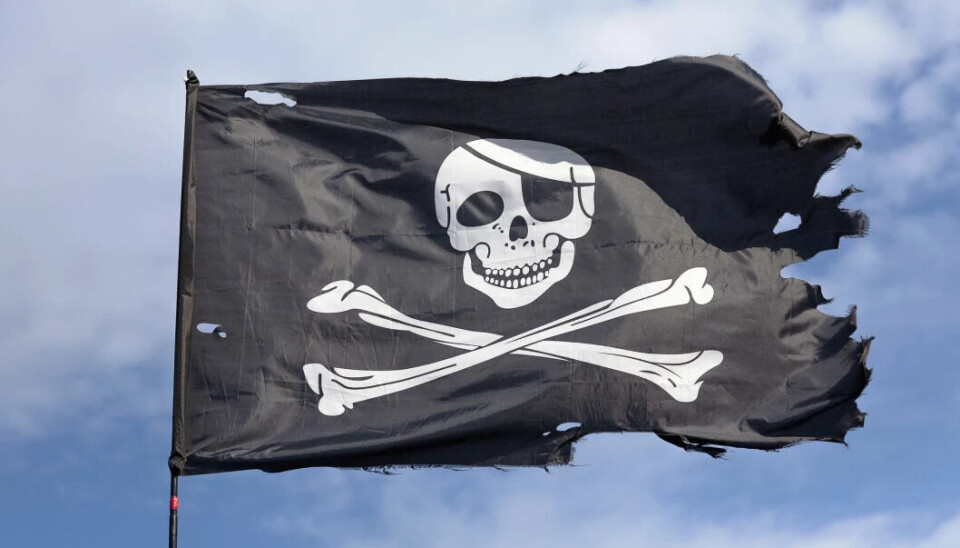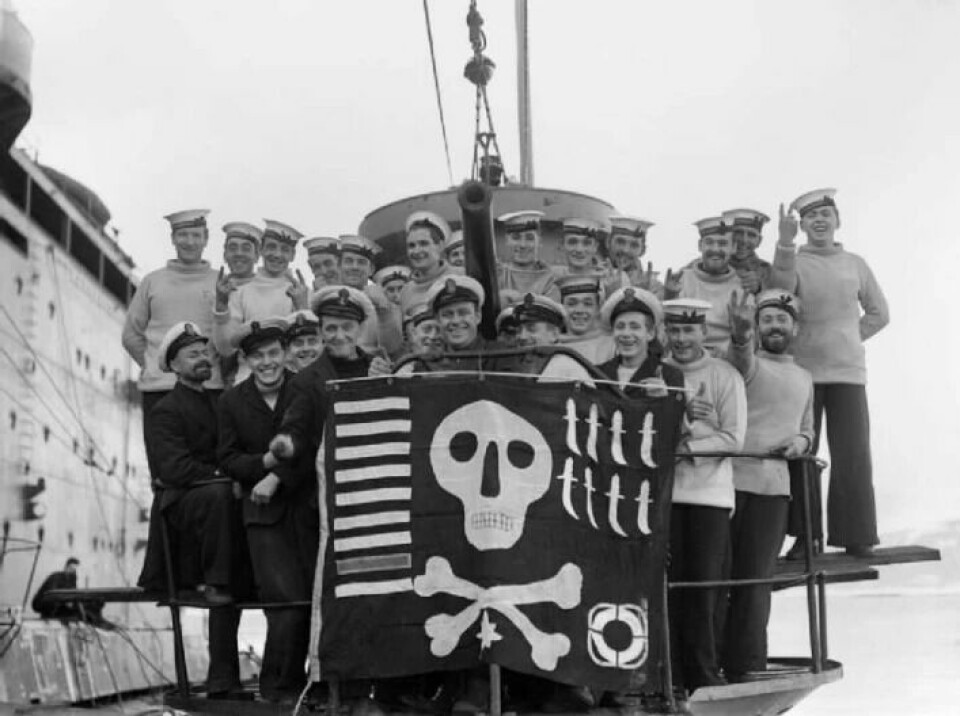
Did pirates really fly the Jolly Roger?
ASK A RESEARCHER: We asked a professor who has researched pirates.
A ship is spotted in the distance with a flag waving in the wind.
It is large, black, and has skull and crossbones on it. It's the Jolly Roger. Now there is no doubt about who is coming.
Did pirates actually use such flags in real life?
Tricked their victims
Professor Magne Frostad has researched pirates.
"The answer is that they often sneaked up on ships by using flags from other countries. For example, by using the same flag as the ship they were going to rob," he says.
They would then approach the ship, before suddenly switching to a pirate flag.
"Pirates started using the flag with skull and crossbones 300 years ago," Frostad says.
They hoped that the flag would be so frightening that their victims would surrender without a fight.
Then the pirates could just walk aboard and plunder things. They would also avoid damage to their own pirate ship.
Before the flag we all recognise was used, pirates used many different flags.
If they hoisted a black flag, their victims would be allowed to live if they surrendered. The red flag meant full battle and no mercy.

Forced to be a pirate
"Who were these pirates?"
"Pirates had often worked at sea before. Some lost their jobs due to war and poor economy. If you became a pirate, you could still earn money at sea," Frostad says.
Others were kidnapped and forced onto the pirate ship.
"What were they after?"
"The pirates were businessmen and were looking for things that could be sold at a high price. Some ships carried chests of gold, and so the treasure hunt was on," says Frostad.
"What if the ship was empty, though? They couldn't know what was there."
"Then they had to think. Is this ship better than what we have? Should we switch? Sometimes they took the new ship with them as well. With more ships, they could steal more," Frostad says.
More money for the captain
Life on a pirate ship was brutal. The ship could be dirty, and there could be a shortage of food onboard.
Many sailors did not live very long in the old days, but as a pirate, there was at least some money to be made. Especially if they found treasures.
"Everyone got their share of the treasure. And if you lost an arm or a leg in battle, you were supposed to get a little extra," Frostad says.

Pirate flags during World War II
The pirate flag with skull and crossbones was mostly used in the 1700s.
"But during World War I and II, it appeared again," Frostad says.
The British used submarines to sink enemy ships, teasing the enemy by waving the Jolly Roger.
———
Translated by Alette Bjordal Gjellesvik.
Read the Norwegian version of this article on ung.forskning.no
































